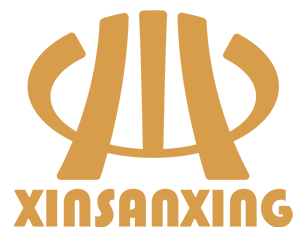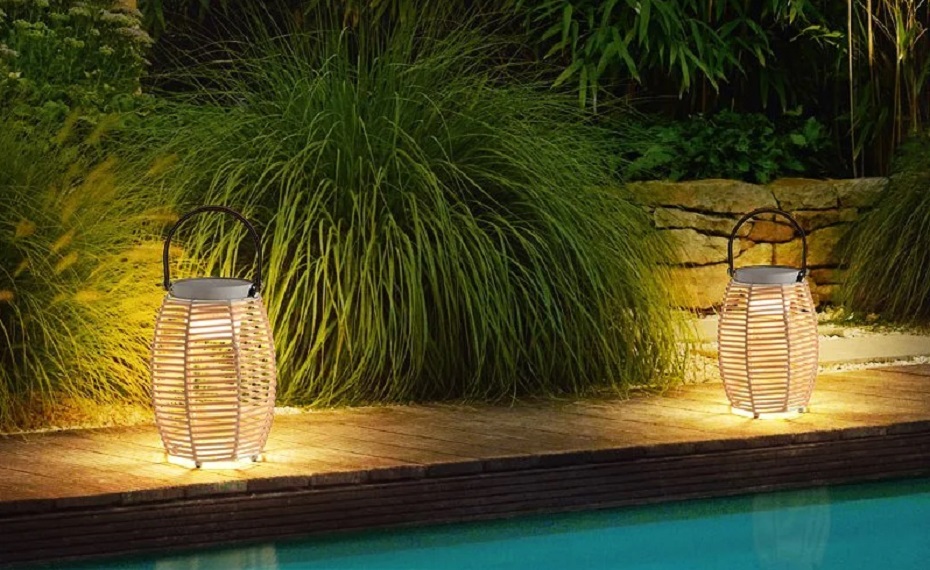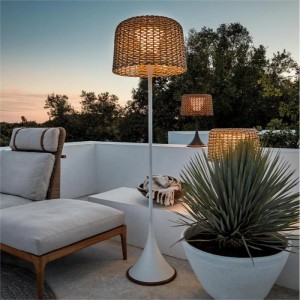Woven solar lanterns are an outdoor lighting device that combines environmental protection, practicality and beauty. These lanterns are usually woven from natural or synthetic materials and combined with solar power supply technology to provide warm lighting for outdoor spaces such as courtyards and balconies. As people's demand for environmentally friendly products increases, woven solar lanterns are becoming increasingly popular among consumers due to their low carbon emissions and energy-saving characteristics.

1. Design features of solar woven lanterns
1.1 Lantern Shape and Size
The shapes of woven solar lanterns vary, with round, square and cylindrical shapes being the most common. Round lanterns are usually suitable for large outdoor decorations and can provide uniform lighting effects. Square lanterns are more suitable for modern courtyard designs due to their strong sense of lines. Column lanterns, due to their unique vertical design, are often used to emphasize a specific space or path.
In terms of size, large lanterns are suitable for open outdoor spaces and can become a visual focal point; small lanterns are more suitable for embellishing paths or hanging on trees and balconies to create a decorative lighting effect.
1.2 Weaving Pattern and Style
Weaving pattern is an important element in lantern design, and common ones include diamond, grid, wave, etc. The diamond pattern can create a more uniform light and shadow effect due to its tight structure. The grid-like weaving makes the lantern present a delicate light spot effect after lighting, which is suitable for creating a romantic atmosphere. The wave pattern is more dynamic and can add a vivid visual effect to the space.
The weaving style not only affects the appearance of the lantern, but also determines the way light penetrates. A tighter weave can reduce the direct transmission of light and create a soft lighting effect; while a sparse weave can make the light more direct, which is suitable for scenes that require stronger light.
1.3 Light effect and functional design
The weaving density of the lantern directly affects the light penetration effect. By designing different densities of weaving, the degree of light diffusion can be controlled, thereby achieving a variety of light and shadow effects. Some lantern designs also add reflective materials to the weaving to enhance the light effect.
In terms of functional design, woven solar lanterns need to consider waterproof, dustproof and weather resistance. Since these lanterns are exposed to the outdoors all year round, they should be designed to ensure that they can work properly in all weather conditions. This requires the material to have good UV and antioxidant capabilities, and the electronic components inside the lantern also need to be well sealed to prevent the intrusion of moisture and dust.
2. Material selection for woven solar lanterns
2.1 Woven materials
Woven materials are a key factor in determining the texture and durability of lanterns. Common woven materials include natural rattan, plastic fiber and natural bamboo. Rattan woven lanterns have a natural texture and are suitable for creating pastoral-style outdoor decorations, but they need to be treated with antiseptics to improve their durability. Plastic fibers have become the mainstream material for outdoor lanterns because of their strong weather resistance and diverse colors. Lanterns woven from natural bamboo have a unique oriental charm, but they need to be treated with insect and mildew prevention before use.
2.2 Solar Panels and Batteries
Solar panels are the core power supply components of lanterns. Common types of solar panels include monocrystalline silicon, polycrystalline silicon and thin-film solar panels. Monocrystalline silicon solar panels are highly efficient and suitable for areas with strong sunshine, while polycrystalline silicon solar panels are cost-effective and suitable for most areas. Although thin-film solar panels are relatively inefficient, they perform well in low-light conditions and are suitable for environments with insufficient light.
The choice of batteries is also crucial. Lithium batteries or nickel-metal hydride batteries are usually used. Lithium batteries have large capacity and long life, but are more expensive; nickel-metal hydride batteries are more economical and suitable for small and medium-sized solar lanterns. Battery capacity directly affects the continuous lighting time of the lantern, so it needs to be selected according to actual use needs.
2.3 Choice of light source
At present, LED bulbs are the main light source for woven solar lanterns. LED bulbs have the advantages of high efficiency and energy saving, long life, and low heat generation, making them very suitable for use with solar energy systems. The choice of light color temperature can be adjusted according to specific scenarios: warm white light is suitable for creating a warm atmosphere, while cold white light is more suitable for occasions that require brighter lighting.
If You Are in Business, You May Like
Woven solar lanterns have unique advantages in design and material selection, which not only enhance the aesthetics and functionality of the product, but also improve its durability in harsh outdoor environments. Through reasonable material selection and design optimization, woven solar lanterns can provide users with long-term and reliable lighting solutions while contributing to environmental protection.
Looking to the future, with the advancement of technology and the improvement of environmental awareness, solar woven lanterns will occupy a more important position in the field of outdoor lighting and become a symbol of a green lifestyle. As a leading manufacturer of environmentally friendly garden lighting, we will also take the lead and carry out our desire to create green lighting for the earth.
Post time: Aug-10-2024











